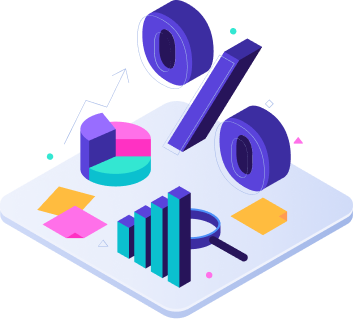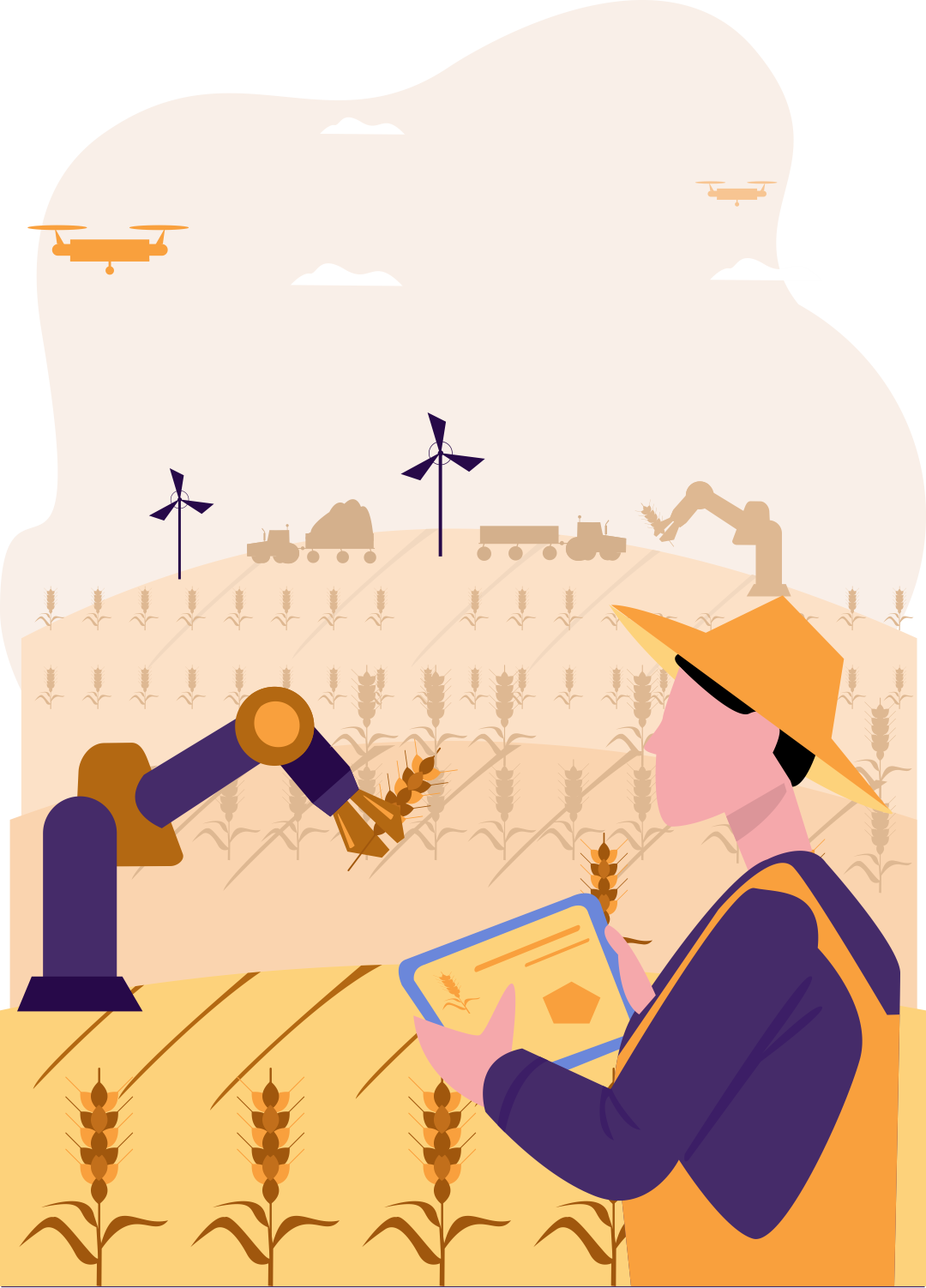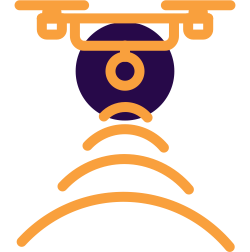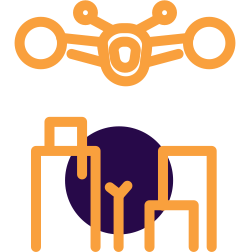Agriculture vertical for grains to connect Producers with Off-takers through Kireap’s Digital platform. Kireap will simplify the logistics value chain and remove multistage inefficient intermediaries, this will, consequently, improve prices in the value-chain.
Revolutionizing Farming and Transportation of Goods from Demand to Delivery.
A sustainable and socially responsible world, driven by data-based solutions that generate breakthrough efficiency gains and push the boundaries of technological evolution.
To enable a range of new businesses by verticalizing transportation systems from demand to service delivery, paving the way for sustainable and autonomous mobility of goods and people with an intelligent, secure, and integrated system that advances multi-modal transactional and transportation solutions, including the airborne segment.
The first step toward this vision is to solve some fundamental issues of the agriculture ecosystem and ensure sustainable and inclusive growth, adaptation to regulations, climate change, geopolitics, and consumer behaviour.
Working with farmers and consumers, we are building innovative, widely-adaptable systems (MASSs) to support the technological revolution currently happening throughout agriculture’s entire value chain. Sensitive to the global need for increased food production, our systems will address key agriculture processes to create sustainable, value-based solutions for customers.
Our technology will deliver improvements in crop storage, transportation, and consumed resources (water, energy, nutrients), empowering individuals, improving their quality of life, increasing productivity, and securing future business needs and sovereignty.
Collected data (from our proprietary digital solutions - MASSs) will be used to continuously improve the system and will be made open for analysis to public bodies to drive policies. The infrastructure created for the agriculture vertical will be re-used and adapted to respond to future multimodal transactional and transportation use cases and to match demand with supply.
INDUSTRY VERTICALS
Agriculture
Farmers typically struggle to achieve operating profit margins due to crop seasonality, farmers' proportionally high level of fixed costs, inefficiencies in the value chain and lack of data-driven knowledge.
Putting the producer at the centre of our system, Kireap will offer a digital platform that relies on data to match crop type, distance, quantity, quality, and price demand from Off-takers with supply from producers.
Thus, carving ideal logistic paths through proprietary algorithms to achieve better prices for both buyer and seller. Users will also be able to access auxiliary services like insurance, credit lines, and data-based productivity solutions.
By identifying additional selling opportunities for producers and flattening the value-chain, Kireap will contribute to improved transactions between buyers and sellers, consequently improving the market price for end consumers.
More InfoRemote Sensing
Inspections services can be extremely critical and time consuming. By offering an unbeatable capability for remote sensing, monitoring, and tracking businesses (lands, powerlines, pipelines, windmills), Kireap can leverage the systems and hardware designed in the agriculture application
Logistics
Complete the full integration of its System of Systems encompassing the Digital Platform [MASSs] including customers, supply chain and system partners like ground segments and satellites, UAS, and sensor providers. Achieving such a verticalization will disrupt the transportation and mobility industry, realising the security and safety requirements for autonomous transportation systems - requirements that cannot be fulfilled at the level of the platform only - and providing new business opportunities for airborne solutions
Urban Air Mobility
Expand the systems and hardware developed to create additional opportunities for airborne solutions ultimately to passengers’ Urban Air Mobility.
VALUE CREATION

Optimise Logistics Algorithms (OLA)
Provides optimised logistics options based on distance, time, cost and payload, taking into account the number of suppliers and available transportation modes.
MORE INFO
Optimise Forecast Algorithm (OFA)
Forecasts supply and demand based on regional historical data and collected data points to generate recommendations for producers, predict off-season demands and improve inventory management.
MORE INFO
Optimise Price Algorithm (OPA)
Calibrates the supply-demand curve, predicting the year-long demand and consequent price fluctuations to obtain a win-win price for producers and Off-takers.
MORE INFO
Optimise Monitor Analytics (OMA)
Analyses the continuous flow of data from different sensors, databases and imageries (satellites/aerial) to create predictive patterns and recommend effective actions to take when preparing an actionable insight for users.
MORE INFO
Unmanned Aerial System (UAS)
Blueprint of a scalable UAS ranging from small to large multipurpose drones - payload from 5 kg to 450 kg - covering both inspection and logistics tasks. This includes intellectual properties on airworthiness, design, auto-pilot, flight termination and safe landing algorithms.
MORE INFOSUSTAINABILITY GOALS
Investment is needed to boost global food production, but there is also the added difficulty of doing it in a way that is more environmentally sustainable.
- Wheat production generates 450,000 tonnes of CO2 via 850,000 shipments in Europe.
- 30-40% lost before reaching the market due to improper storage, processing, or transportation issues.
- Miscalculation in the use of nutrients and chemicals leads to nutrient overload and soil dead zones.
We have specifically designed our comprehensive systems to enable the optimal use of resources, improve crop assessment, increase efficiency in the supply chain, and facilitate more efficient logistics throughout the entire supply chain.
Hence, Kireaps sustainability goal is to get:
- Lower carbon footprint.
- More sustainable and socially responsible food production.
- Higher market prices for value adding players.
- Ultimately reducing end-consumers price.
- Unique and holistic bio-database open to states and public bodies.

KEY MILESTONES AND DEVELOPMENT PHASES
Phase 1
Phase 2
Additional on-demand services, like use of historical data to contract financial products, and, supply and demand forecasting capabilities. Complementary solutions based on advanced sensors and imagery data points, will anticipate quality output of the crop, and enable productivity improvement. Part of the demand will be served by multipurpose drones that will also allow solutions for remote sensing.
Phase 3
New business verticals, by expanding MASSs into multimodal transportation, logistics value chain, and capability for remote sensing, tracking businesses like lands, powerlines, pipelines, windmills.
Phase 4
Full System of Systems integration encompassing the Digital Platform [MASSs] including customers, supply chain and system partners like ground segments and satellites, UAS, and sensor providers, opening new business opportunities for airborne solutions in logistics, remote sensing, and ultimately developing passengers’ Urban Air Mobility.

ABOUT US

Kireap was founded in India in April 2023 to revolutionize Farming and Transportation of goods from Demand to Delivery
Farmers, typically, struggle in achieving operating profit margin. Difficulty accessing broad markets (farm-to-market) puts downward pressure on the applied price. Additionally, issues with economies of scale, high transportation costs, and limited access to high quality inputs, financial products and lack of data driven knowledge limit productivity and yield. While part of the problem is caused by crop seasonality and farmers' proportionally high level of fixed costs, another part is caused by inefficiencies in the value chain led by multistage inefficient intermediaries. By opening the market to the producer, it will be possible to identify additional selling opportunities leading to improved transactions between buyers and sellers and consequently positively affecting the market price of end products (for the consumers).
MORE INFO



 Vision
Vision Plan
Plan


